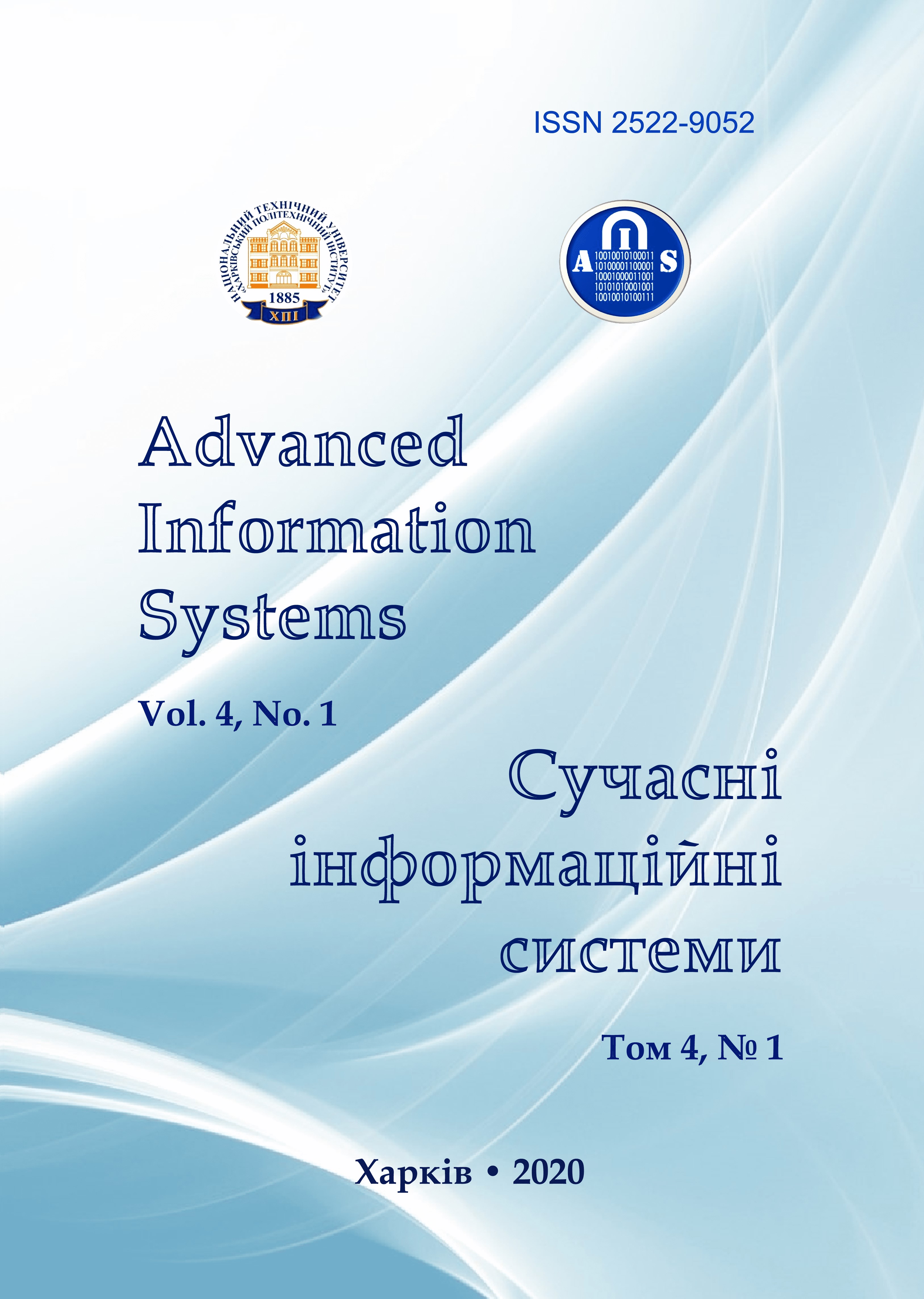Research of data space transformation in Kohonen network training for methods of structural classification of images
Main Article Content
Abstract
The subject of the article's research is the modification of Kohonen neural network training for image classification. The purpose is to define a new data space for network learning and to create an effective classification method based on a set of key point descriptors. Task: use of the Kohonen neural network to train the classification system in a certain data space, transform the data space of the training network, study adaptive capabilities and evaluate the effectiveness of the network by means of software modeling. The methods are: data mining, structural classification of images, ORB detector for determining key point descriptors, Kohonen network learning tools, software modeling. The following results were obtained: data transformation models that enhance learning performance are proposed. The comparative analysis of the developed methods of training and classification is made. A software implementation of the classification system has been carried out, its efficiency has been experimentally investigated and the processing time has been evaluated. Conclusions. The scientific novelty of the study is refining structural classification methods using Kohonen network by introducing a new center based clustering approach and a method for collapsing descriptor data, which contributes to high classification performance at sufficient speed and enables the use of these modified methods in real-time applications. The practical importance of the work is created by the models of software used to evaluate the performance of the classifiers in computer vision systems, and the proven effectiveness of the development on the specified image databases.
Article Details
References
Gorokhovatsky, V.O. (2014), Structural analysis and data mining in computer vision, SMIT, Kharkiv, 316 p.
Gorokhovatsky, V.O. and Pupchenko, D.V. (2018), “Classification of images of visual objects according to the set of de-scriptors of singular points based on the Kohonen neural network”, Control, navigation and communication systems, No. 2 (48), pp. 68-72.
Gorokhovatsky, V.O., Pupchenko, D.V. and Solodchenko, K.G. (2018), “Analysis of the properties, characteristics and results of using the latest detectors to determine specific points of the image”, Control, navigation and communication systems, No. 1 (47), pp. 93-98.
Gorokhovatsky, V.A. (2018), “Image Classification Methods in the Space of Descriptions in the Form of a Set of the Key Point Descriptors”, Telecommunications and Radio Engineering, 77 (9), pp. 787-797.
Leutenegger, S., Chli, M. and Siegwart, R.Y. (2011), “BRISK: Binary Robust Invariant Scalable Keypoints”, Computer Vision (ICCV), pp. 2548-2555.
Ethan, Rublee, Vincent, Rabaud, Kurt, Konolige and Gary, Bradski (2011), “ORB: an efficient alternative to SIFT or SURF”, Computer Vision (ICCV), IEEE International Conference on IEEE, pp. 2564-2571.
Kohonen, T. (2013), Self-organizing maps, BINOM. Laboratory of Knowledge, Moscow, 655 p.
Osovsky, S. (2002), Neural networks for information processing, Finance and statistics, Moscow, 344 p.
Borisov, E. (2014), Cluster based on the Kohonen neural network, available at: http://mechanoid.kiev.ua/neural-net-kohonen-clusterization.html
Mousavi, S.M.H. and Lyashenko, V. (2017), “Extracting old persian cuneiform font out of noisy images (handwritten or in-scription)”, 10th Iranian Conference on Machine Vision and Image Processing (MVIP), pp. 241-246.
Han, J. and Kamber, M., (2006), Data Mining: Concepts and Techniques, Morgan Kaufmann Publishers, Amsterdam, 754 p.
Gadetska, S.V. and Gorokhovatsky, V.O. (2018), “Statistical Measures for Computation of the Image Relevance of Visual Objects in the Structural Image Classification Methods”, Telecommunications and Radio Engineering, 77 (12), pp. 1041–1053.
Lin, M., Chen, Q., and Yan, S. (2013), “Network in network”, arXiv preprint arXiv:1312.4400.
Josiah, Wang, Katj,a Markert, and Mark, Everingham (2009), “Learning Models for Object Recognition from Natural Language Descriptions”, Proceedings of the 20th British Machine Vision Conference (BMVC2009), September 2009.
Wang, J., Markert, K., and Everingham, M. (2009), “Learning Models for Object Recognition from Natural Language Descrip-tions”, BMVC, Vol. 1, p. 2.
Gorokhovatsky, O., Gorokhovatskyi, V. and Peredrii, O. (2018), “Analysis of Application of Cluster Descriptions in Space of Characteristic Image Features”, Data, 3(4), 52, DOI: http://doi.org/10.3390/data3040052
Calonder, M., Lepetit, V., Strecha, C. and Fua, P. (2010), “Brief: Binary robust independent elementary features”, European conference on computer vision, Springer, Berlin, pp. 778-792.
OpenCV foundation (2017), OpenCV: Image Thresholding, available at:
https://docs.opencv.org/3.3.0/d7/d4d/tutorial_py_thresholding.html
